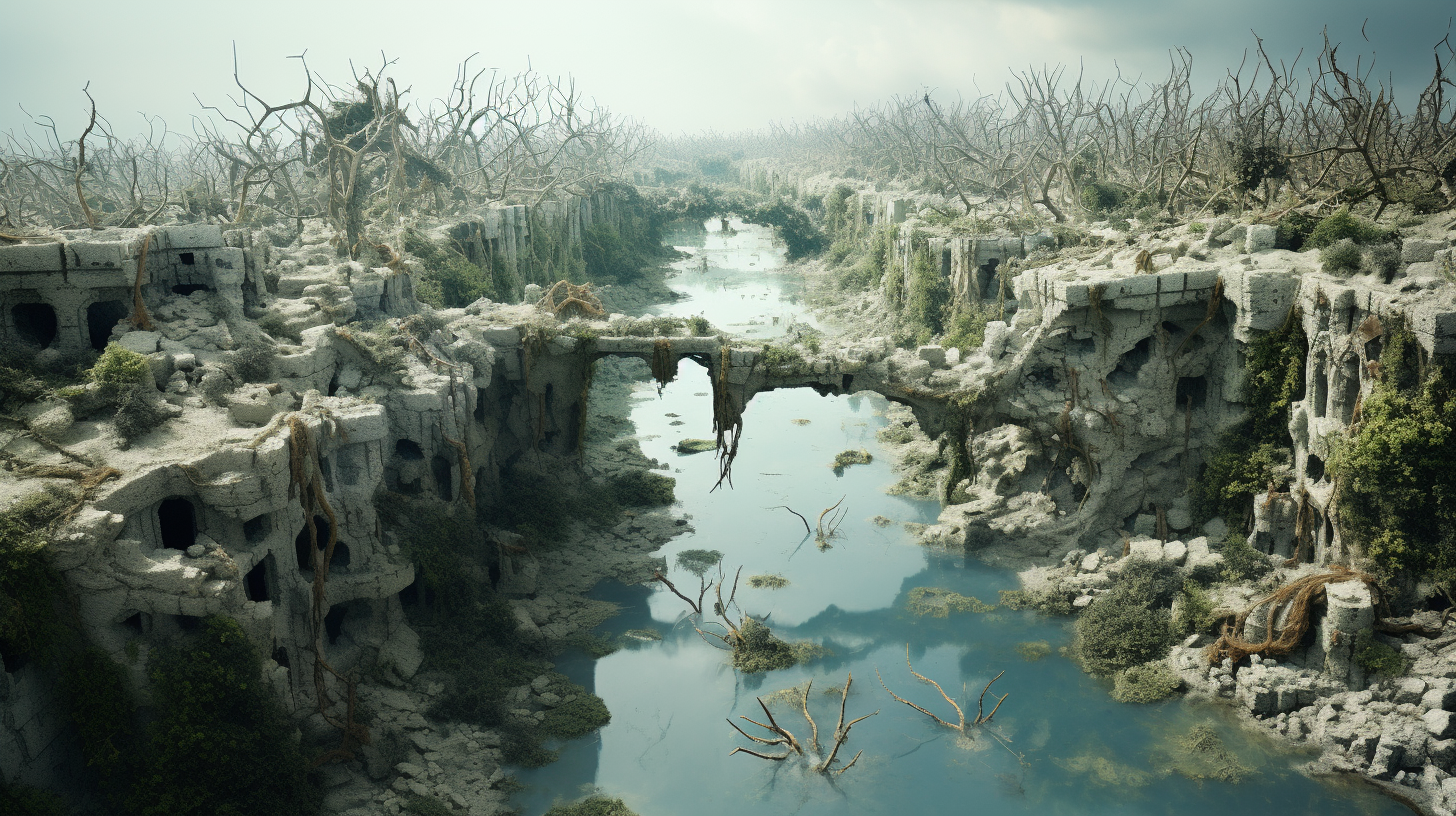In a world marred by the rapacious appetite of humanity’s industrial expansion, the shrinking islands of biodiversity cling to survival against all odds. These isolated reserves, the final bastions of life once brimming in every corner of the Earth, now harbor the remnants of what was once a symphony of ecological harmony.
Amid the haunting echoes of collapsed mountain ranges and urban decay, these reserves stand as grim reminders of the war waging between nature and humankind’s quest for progress. Here, conservationists labor with fervor, their efforts akin to patching a sinking ship with whatever scraps remain. They are the undertakers of lost beauty, chronicling what’s left while fighting a seemingly Sisyphean battle.
The protagonist of our somber narrative: the isolated reserve. A microcosm reflecting the macro tragedy unfolding worldwide; where every victory in saving a species feels overshadowed by the terror of impending loss. Decades of careful cultivation, reintroducing endangered species, and fending off invasive entities culminate in a tableau of bittersweet reality.
Take, for example, the much-celebrated Arca Noctis, a reserve that boasts a collection of the most elusive nocturnal animals. Beneath the moon’s watchful eye, creatures of the night that once frequented expansive habitats now find solace in a mere fragment of their original empire. One might discover the critically endangered nightjar, its soft calls a rare melody against the silence of distant, fallen brethren.
Lest we forget the aquatic sanctuaries, the silently suffering coral havens like Reef of Resilience. A haven now haunted by the specters of its vibrant past, it struggles against warming seas and acidification. Divers describe their dives as time travel; each stroke takes them deeper into a world crippling under the weight of negligence.
Media often portrays these tales of isolated reserves as adventures — a glimmering thread of excitement in a fabric worn by despair. Tourists flock, their curiosity piqued by the rare chance to witness a surviving fragment of Gaia’s children. However, this fleeting interest masks a grotesque reality where life hangs by a thread, maintained only through human intervention in landscapes that should’ve been self-sustaining.
Conversations with rangers reveal a potent mix of dedication and desolation. “Every day is a testament to what we’ve lost,” one ranger confides, “and what we’re desperately trying to save.” They speak of a silent spring, of skies once painted with the wings of birds now ominously still. The mention of the Monarch Butterfly — once a migratory marvel that graced the article ‘Is Hope Extinct?‘ — is enough to stir a pang of communal guilt.
The scientific community perseveres, meticulously cataloging genetic materials and gametes in a stark effort to prevent entire lineages from being erased. Yet their work feels more akin to preserving embers from a fire rapidly being extinguished. A testament to tenacity, or perhaps a requiem for the inevitably damned?
So what lies ahead for these ecological lifeboats? The debate rages on. Some argue for fierce expansion, proposing a reclamation of landscapes to reconnect these reserves into a network capable of sustaining biodiversity. Others, in a fatalistic acceptance, emphasize the importance of maintaining what limited grounds we have left as a living museum — an epitaph for the world we could not save.
In closing, the struggle within isolated reserves is a microcosm of a larger, more dire confrontation with our own consequences. It is the frontline of a battle that we, as a species, have instigated and now cannot escape. The sanctity of these last refuges is violated by the persistent advance of an eco-dystopia. Indeed, they may very well be the final chapters in the story of life’s diversity on Earth — a forewarning we must heed with unrelenting urgency.
